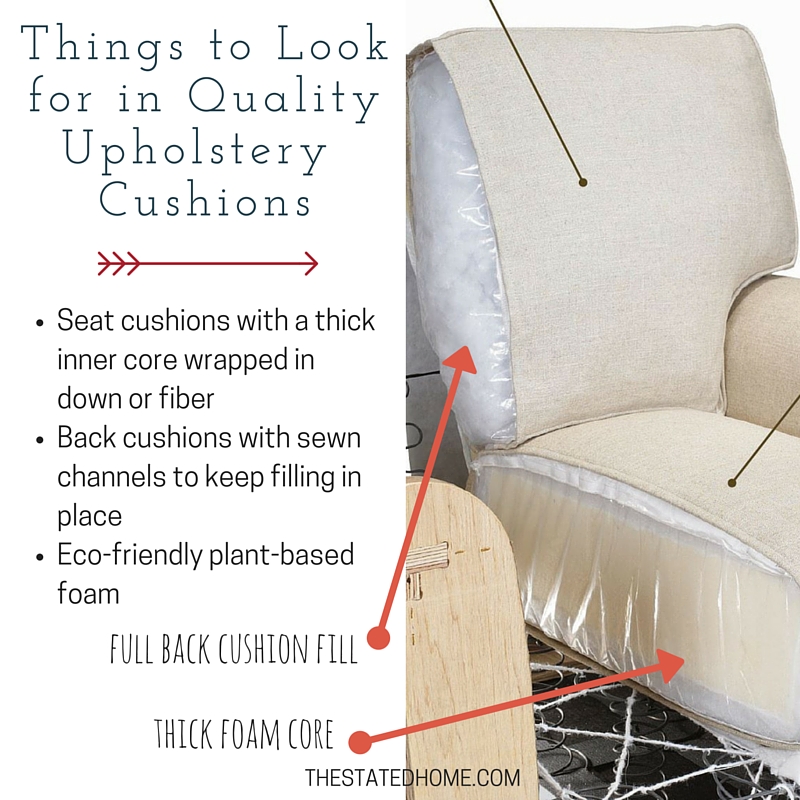This is the third blog in our series of posts about how the best sofas are constructed and it focuses on sofa cushions. (If you haven’t read our first post on frame material and construction or our second post on suspension systems, start there.) The quality of cushions may seem easy to determine since you can actually touch them and sit on them, but there is more going on in there than you might realize. Here’s a little about the different kinds of cushions you’ll find (and check out our selection of high quality upholstery here):
Seat Cushions
Seat cushions are typically made with a foam or inner-spring core wrapped in either a polyester fiber, down (actually a feather-down blend), or more recently, memory foam. A foam core should be dense and at least four inches thick (the overall cushion thickness will obviously be greater than that). Instead of foam, some cushions will have an inner core of individually wrapped springs. The end result is a seat that’s a little firmer and that will hold its shape well. Whatever the cushion construction, the whole thing should be wrapped in down-proof ticking to prevent rogue feathers from peeking through.
While shopping around, you may find cushions that are either all foam or all down, both of which you should avoid. The all foam cushions are a low-cost option that aren’t very thick or comfortable and the all down cushions will be flatter than a pancake before you know it. To learn more about how cushion fill affects comfort, read our blog post on that topic here.
When looking at cushion options, it’s even better if the materials are made from eco-friendly products. Many cushions (including what we offer) are made with a soy-based foam that replaces some of the petroleum used as well as polyester fibers made from recycled plastic drink bottles. At The Stated Home, we offer several different cushion options to get you the perfect level of comfort.
In a nutshell: Make sure your cushions have a nice thick core of foam or springs that is wrapped by either polyfiber or down. Avoid any thin cushions and choose eco-friendly materials when you can.
Back Cushions
Back cushions are typically either 100 percent polyfiber or 100 percent down or a combination of the two. Back cushions should have channels sewn into them to ensure that the filling stays where it should. There should always be down-proof ticking wrapped around the cushion. When shopping, unzip a back cushion and look for channels (sewn lines in the cushion) and make sure there aren’t any feathers coming through.To read more about back cushion fill and comfort, check out this post.
Like what you read? Visit thestatedhome.com to shop our collection of made-in-America furnishings.


Leave a Reply